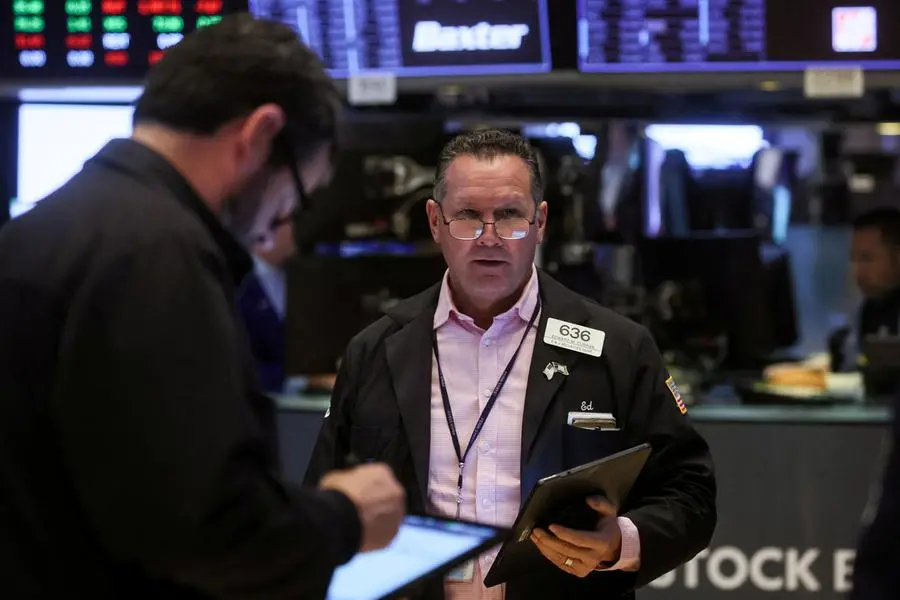PHOTO
LONDON - The economic airplane hasn't reached the runway yet and has hit some more heavy turbulence in 2023 - but investors suspect a relatively gentle touchdown may be back on the cards.
It's not even midyear yet, but the full gamut of scenarios has been juggled in just five months.
World markets have swung from "hard landing" fears of late 2022 to the "soft landing" hopes of the new year and then even unnerving thoughts of "no landing" at all - just before the banking stress hit of March forced them to return to square one.
But as half-year investment outlooks hit inboxes and go on roadshows - and another crosswind from a risky U.S. debt ceiling crunch dissipates - hopes of walking away without serious damage from this hair-raising post-pandemic trip have re-emerged.
"The economy is more resilient than the market realizes," BlackRock's Chief Executive Larry Fink said on Wednesday, adding more interest rates rises will be necessary but that he saw no "evidence that we're going to have a hard landing."
Of course, there's no rulebook on these potential "landings".
A "soft landing" typically relates to the ability of the Federal Reserve and other central banks to get inflation back close to 2% targets without crashing the economy into a deep contraction with surging unemployment via extreme rate rises.
That's a narrow airstrip - subject to all kinds of definitional argument. Does a mild technical recession of two quarters of falling national output equate to a crash if "full employment" assumptions of jobless rates below 5% prevail?
On that looser take, the Fed has indeed managed to pull off the trick in nearly half the slowdowns of the past 60 years.
Judged by the remarkable strength of the jobs market this time around, even as inflation slows and the historically brutal Fed hiking campaign nears an end, it's not hard to see why hopes are rekindled. The ebbing of regional U.S. bank worries helps.
It also depends on whose perspective you take. A gentle bump on the tarmac for most households may not feel that "soft" for investors - who have arguably already suffered a hard landing in one of the worst annual recoils in both stocks and bonds on record last year.
And of course, pernicious risks remain - from rancorous geopolitics, energy volatility, the lagged effect of credit tightening on real estate and the sizeable attraction of staying in cash with rates of 4%-5%.
'NOTHING EASY'
But many asset managers argue risks always abound and the central case is what matters most from here - with peak interest rates, persistent corporate earnings growth, tech sector excitement around artificial intelligence and some attractive valuations around the world.
"The core scenario is actually relatively constructive," said Willem Sels, chief investment officer at HSBC Global Private Banking, pointing out that diversified portfolios have already regained more than half their 2022 fall.
"So while many investors are sitting on cash, we don't," said Sels, advising clients consider blue chip dividend stocks, bonds, volatility strategies and hedge funds.
Although narrowly led by tech, the S&P500 is up almost 10% so far in 2023 - with the Nasdaq 100 up more than 30% and the AI-fueled FANG+TM group of 10 leading digital, chip and tech megacaps up a whopping 65%. The wider MSCI all-country stock index is up 8%.
Relieved the debt ceiling saga is near over, Wall Street's "fear index" - the VIX gauge of Wall St equity volatility - on Thursday approached its lowest close since 2021.
Even the broadest indices of U.S. and global government and corporate bonds are up nearly 2% in the year to date despite the persistent inflation, interest rate and political angst.
Few asset managers seem bullish per se. Even if U.S. recession is averted this year, the combined effect of monetary tightening and ongoing liquidity withdrawal in both the United States and Europe - alongside more restrictive fiscal policies - continues to make many investment houses fret.
"Nothing easy or pleasant is usually associated with episodes of liquidity withdrawal as intense as the one that the global economy is now experiencing," State Street Global Advisors' chief economist Simona Mocuta told clients.
But while this keeps the global growth fragile through the end of this year and 2024, and should keep investment strategies cautious too, State Street reckons a deepening and broadening of disinflation is the one "silver lining" in the outlook.
"Reaching 2% - or close enough that the difference will not matter - in 2024 is not such an impossible hurdle as the general opinion seems to imply," Mocuta said. "Not in a world where price competition likely re-emerges as backlogs shrink, demand slows and base effects work in one's favor."
If correct - and not all agree - the prospect of a sustained return to 2% inflation targets would surely turn off the seatbelt sign.
The opinions expressed here are those of the author, a columnist for Reuters
(by Mike Dolan, Twitter: @reutersMikeD; Editing by Lisa Shumaker)





















